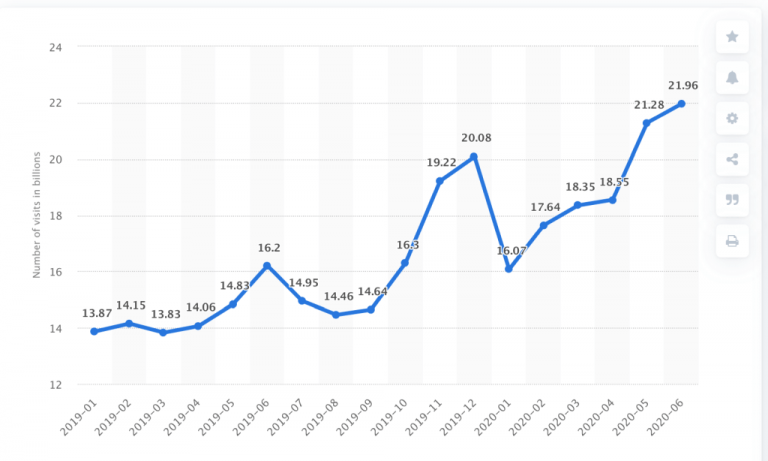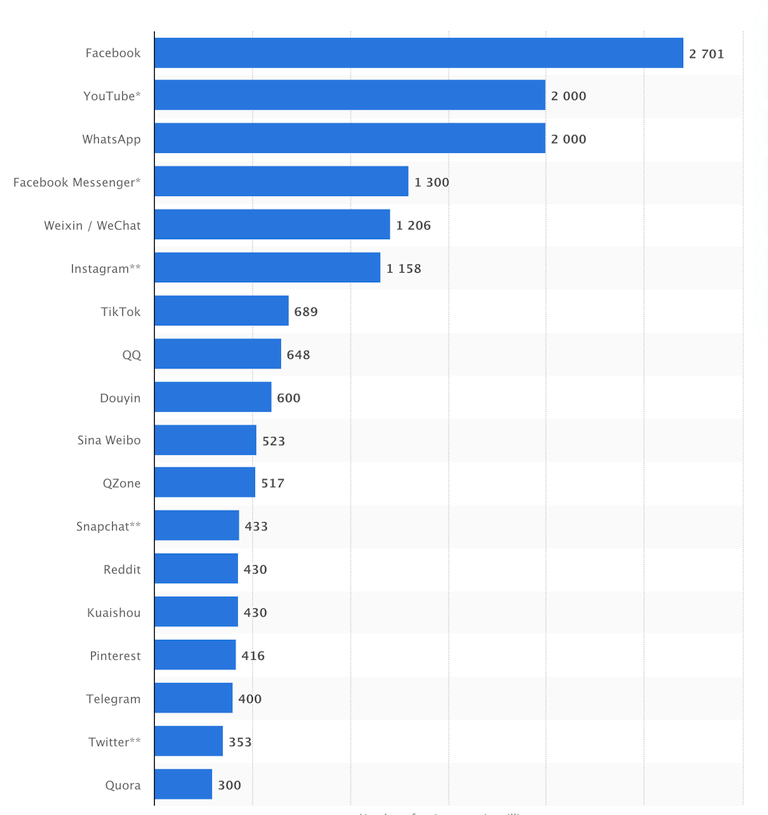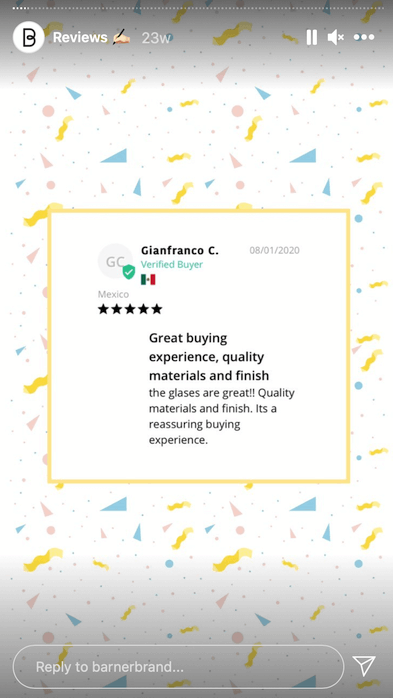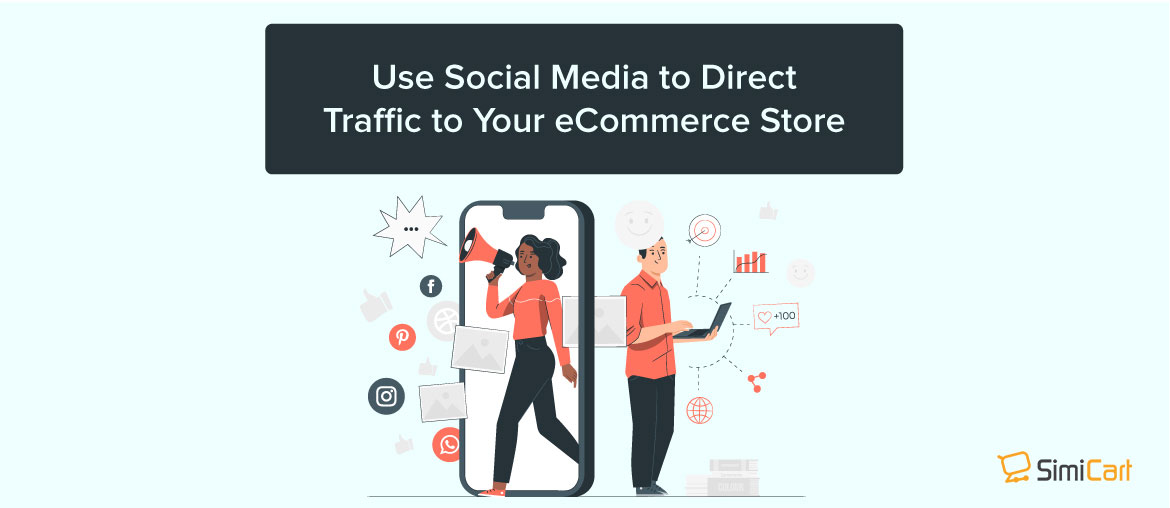Table of contents
Let’s face it – nothing brought the eCommerce world more into focus than the ongoing COVID-19 pandemic.
It’s not that eCommerce wasn’t booming already, it’s just that the pandemic made online shopping the only way to shop for many .
For instance, do you know that the global traffic increase between January 2019 and June 2020 surpassed even the well-known holiday traffic peaks? Retail sites are said to have generated almost 20 billion visits in June 2020 (which is basically up from 16.07 billion global visits back from January 2020).
Here’s proof:

by average monthly visits (in billions)
Source: Statista
As consumers worldwide started shifting to online shopping, it’s safe to conclude that this will boost the eCommerce industry. And thus, there are enormous repercussions for all online store owners.
That said, this doesn’t come without challenges. The rise of the eCommerce industry means more online store owners, which also means more competition.
Not to worry. This is far from a deal breaker for you and your online business. If you understand your target audience, your business, and what you’re trying to achieve, you’re off to a good start.
That being said, you need to come up with ways to drive traffic to your eCommerce store. So, let’s talk about social media.
Why Go With Social Media?
There are many ways to drive traffic to your online store. But one of the best ways is by using social media platforms.
And we’ll walk you through it step by step.
But first, let’s see what makes social media so important, and what this means for the digital world. Here are some empowering social media stats:
- There are 3.6 billion social media users worldwide.
- Worldwide, people aged 16–24 spend closer to 3 hours a day on social media;
- On average, internet users spend 144 minutes on social media every day across devices (that means about 1 of every 3 hours spent on the Internet is on social platforms);
- the average social media user has 8.6 different social accounts ;
- 43% of internet users use social media when researching things to buy;
- 27% of internet users say they find new products through paid social ads (following word-of-mouth, TV ads, and search engines);
- 92% of all Instagram users say they’ve followed a brand, clicked on their website, or made a purchase after seeing a product/service on Instagram.
Now, after dwelling on so many stats and a bit of theoretical background, let’s deal with practical examples and tips to make your social media marketing magic happen.
How To Use Social Media to Direct Traffic
1. Identify Your Target Audience
Identifying your target audience is such an important step that we put it as number 1. Yet, it seems that oftentimes it gets neglected. Many times, marketers are so preoccupied with the actual social media channels that they forget about who they’re supposed to be reaching in the first place.
Are you selling fitness leggings, eBooks for teenagers, iPhone accessories, or hologram fanny packs? Then you’re definitely targeting younger generations.
Or maybe you’re selling kitchen gadgets, self-development webinars, baby items, and so on – in this case you’ll definitely be focusing on older millennials or GenX.
Having a clear idea of WHO is your target market or markets, will make targeting them much easier. Which leads us to the next step – the WHERE.
2. Choose The Right Social Media Channel(s)
There are a lot social media channels out there. So, it’s important to know what each one does, and what it can do for your online business. It’s also useful to know how they rank based on their popularity, demographics and usage.
Here are the most popular social networks across the globe:

ranked by number of active users (in millions)
Source: Statista
As you can clearly see, Facebook seems to be the leading platform, followed by YouTube and then WhatsApp.
While it’s important to know which platform ranks high (or the highest), you need to always consider your individual needs as this will affect your business in many ways.
For instance, if you’re targeting a young audience it’d be wise to opt for a platform such as Instagram and/or TikTok, as opposed to Facebook. Or if your target audience is in China, then WeChat would be the best platform.
Once you find out WHERE your audience is, try to find out WHEN they’ll be there.
3. Identify The Right Time To Post on Social Media
The first step to developing any type of social media strategy is determining the best time(s) to post stuff on your social media channel(s) to make sure your audience sees it. This includes paying attention to the day, the time and of course, the social media channel you’re using.
Here are the best times to post on Facebook, Instagram, Twitter, and LinkedIn regarding consumer goods (please note that the LinkedIn section refers to global engagement, and not consumer goods):
Best times to post on Facebook for consumer goods
- Best times: Wednesday at 1 p.m. and Friday at 11 a.m.
- Best days: Wednesday and Friday
- Worst day: Sunday
Best times to post on Instagram for consumer goods
- Best times: Wednesday at 3 p.m.
- Best day: Wednesday
- Worst day: Sunday
Best times to post on Twitter for consumer goods
- Best times: Sunday at 11 a.m.
- Best day: Sunday
- Worst day: Monday
Best times to post on LinkedIn (global engagement)
- Best times: Wednesday from 8–10 a.m. and noon, Thursday at 9 a.m. and 1–2 p.m., and Friday at 9 a.m.
- Best day: Wednesday and Thursday
- Worst day: Sunday
Now that you know, WHEN is the best time to reach your audience. It’s time to discuss HOW you’ll do it.
4. Come Up with Social Media Strategies
Now that you have all this knowledge, it’s time to come up with your strategy. This is where it gets more fun, and you can come up with interesting ways to reach and engage your audience. Here are some successful social media strategy ideas:
Sharing Content
Plan your content based on your chosen platform accordingly. For instance, if you’re using both YouTube and Facebook, plan videos for the former, and videos, images and statuses for the latter.
Also, make sure you post a variety of content across different channels. For instance, if you’re using LinkedIn and Instagram you’ll definitely have a more professional approach with the first one, and you’ll focus more on inspiring visuals and shorter paragraphs with the second one.
That said, whatever you end up posting, make sure it’s aligned with your business and eCommerce goals.
Influencer Collaborations

Influencer collaborations are such an effective way to get more website traffic. There are many ways to approach this, and here they are:
- live stream collaborations;
- giveaways;
- paid sponsorships/ads;
- promo codes;
- gifting;
- takeovers;
- brand ambassador programs.
Don’t forget that for all these “to work” you need to find the right influencer. Not every influencer is right for your product/service. A common misconception is for eCommerce owners to simply pick someone who has a large following, but this isn’t all that matters.
First, you need to choose an influencer whose profile matches your business (you wouldn’t pick someone who promotes cosmetics and fitness leggings to also promote kids toys, right?).
Secondly, pay attention to the engagement that influencer has. This actually matters far more than the number of followers.
Finally, there are many ways to identify the right influencer for your campaign. To start with, you can try to use hashtags to identify potential influencers.
Reviews and Testimonials

Nothing speaks louder than a testimonial from a satisfied client. Do you know that 3 in 4 shoppers say they trust online reviews as much as personal recommendations? This is the beauty of social media – different users sharing information with each other.
After all, isn’t this the whole purpose behind social media? The act of S H A R I N G.
Sharing content (which we already discussed).
Sharing images, statuses, and so on.
Sharing opinions about specific products and companies in the form of reviews.
Before making a purchase, each consumer usually takes a look at (at least!) several reviews to see what others think of the brand/products/services.
Knowing others were satisfied with their purchase gives us a sense of security that we’re making a good investment. Plus, it makes the brand look credible and trust-worthy.
It’s all about providing an enjoyable online shopping experience. Plus, this doesn’t only revolve around getting a consumer to make a purchase.
- It’s about turning them into a loyal client.
- It’s about getting them to write their own review.
- It’s about both parties being happy with the purchase.
Design
Don’t neglect the way your social media channels look. Make sure your videos are always high-quality, the sound is impeccable, your images high-resolution, and there’s some consistency when it comes to colors, shapes, and patterns.
After all, choosing the right visual content can really do wonders. It’s much more attractive and appealing to audiences than the written one.
If this isn’t something you can do on your own, it’s always a good idea to invest in a graphic designer, or a social media manager to handle all these.
Paying attention to such details will help social media users engage in your posts, share them, download them, and so on.
Final Thoughts
Overall, using social media channels to direct traffic to your online store takes some work, but it’s definitely rewarding. As it can be fun, and inform you about how your audience perceives you and your products.
Having the right marketing strategy, collaborating with the right people, and using social media tools wisely is just the first step.
There’s a sea of information on the Internet about how to approach this, but we hope we managed to cover more than just the basics in order to get you started.
Now, it’s all up to you.




